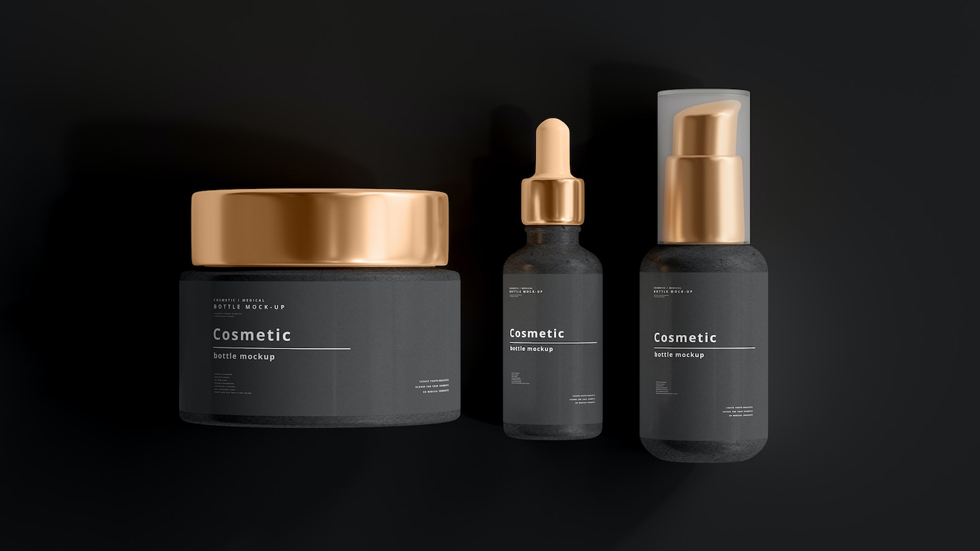
Source Unsplash
Brand identity and customer loyalty are two aspects of running a business that can largely affect a company’s success and longevity in the marketplace.1 In recent years, businesses have used the concept of private labels as a way to boost their identity and encourage loyalty. But what are private labels, and how does it work?
What is Private Label Manufacturing?
A private label is a brand that is owned and sold by a specific retailer or company but produced by a third-party manufacturer. This process, known as private label manufacturing, gives businesses the opportunity to offer distinct products under their own branding and marketing, which helps with brand loyalty in the long run.
These companies that specialize in private label manufacturing craft a wide range of products, including everything from food and beverages to clothing and more, according to the specifications and standards set by the retailer using their services. Along with refrigerated foods and general merchandise, healthcare products are one of the largest categories that grew in the private label sphere in 2022.2
For example, a wholesale beauty supply company might employ the expertise of a cosmetic formulation lab to develop a line of unique beauty products, with the purpose of selling these high-quality products to salons and spas.
Private Label Branding and Marketing

Source: Unsplash
Using a reputable private label manufacturer with expertise in making consistent, high-quality products, in particular, can provide the allure of quality and exclusivity. But other than the inherent quality of the product, the strategy of selling a private label product goes beyond just applying a new label on a generic product. Businesses need to create an identity that resonates with consumers and can compete with established national brands.
Private Label Branding Strategy
The core of private label branding is transforming a simple product into a compelling brand experience. Using their own labeling, retailers associate the product with their company’s values, aesthetics, and promises. It requires creating a specific product persona that aligns with the company’s goals and appeals to the retailer’s demographic.
When your business is crafting its own private label branding, there are a couple of key components that you’ll want to consider:
- Market Positioning – Identifying where the products will exist in the market and how they will distinguish themselves from competitors.
- Design and Packaging – Packaging should be attractive and appealing to your customers but also communicate the quality and essence of the brand in an effective way.
- Value Proposition – Establish a unique selling point that highlights the benefits of choosing your brand over other options.3
Marketing Your Private Label Product
Once your branding strategy is set in stone, it’s time to create a private-label marketing strategy. Branding works to shape the identity of your product and what it stands for, which involves the messaging, emotional appeal, and visual identity of your brand. Marketing, on the other hand, is a tactical approach to communicating that exact brand to the public and driving sales.
Effective marketing will propel your product into the marketplace and right into the minds of potential customers, and it requires plenty of personalization – by addressing the needs of your target audience.4 Here’s how you can approach it:
- Identify Your Target Market – Use market research to gain insights into who is most likely to purchase your product and what drives their buying decisions.
- Create Targeted Messaging – Shape your advertising and promotional content to speak directly to your consumer base, resonating with their preferences and lifestyles.
- Use Multi-Channel Marketing – Take advantage of a range of platforms, from social media to in-store displays, so that your product reaches your consumers wherever they might be.
- Creating Compelling Content – Whether it’s through high-quality images or engaging descriptions, make sure your product stands out and creates an emotional connection.
Keep An Eye on the Market – Don’t forget to track your performance after the launch of your product and adjust your tactics as the market changes and new trends surface.
How Does Private Labeling Work?

Venturing into private labeling can seem like an initially difficult process, but it can build your brand a distinctive presence in the market. From research and development of the product all the way to stocking them on the shelves, we’ll look at the steps to bring your vision to life.
- Research and Product Development – Before a business contacts a private label manufacturer, they need to have a strong idea of what the product will be. This involves identifying consumer needs and gaps in the current market – anything that has the potential for a private-label solution.
- Finding a Private Label Manufacturer – With the product idea in mind, the next step is to find a suitable manufacturer that can make it. Consider product quality, production capability, reliability, compliance, and whether they can meet specific requirements.
- Design and Branding – After the manufacturer is on board, private label branding comes into play. As mentioned, this involves everything to do with the product’s appearance and label design.
- Manufacturing and Production – The manufacturer will then start developing the product – refining the specifications, developing the formula (private label skincare manufacturers or those creating supplements, for example) or creating the actual item, and providing samples for approval. There will likely be plenty of collaboration and communication between the business and manufacturer to make sure they’re happy with the final outcome.
- Quality Control and Testing – When the product samples are approved, full-scale production begins.
- Distribution and Retail Placement – With the products manufactured and packaged, businesses need to establish a distribution strategy and decide where and how they want to sell the product – whether in physical stores, online platforms, or a combination of both.
Marketing and Sales – The last step is launching that marketing campaign. Through communicating the benefits and unique selling points of the product to the target audience, sales are conducted, and customer feedback can be monitored for ongoing product and marketing improvement.
Conclusion
The journey of taking a private label concept to the consumer involves a seemingly long series of steps – but the rewards are certainly worth it. Private label products allow retailers to offer tailor-made products that can enhance their brand portfolio and cater to specific consumer needs.
Through strong market research and strategic private label branding and marketing, retailers can use the private labeling process to their advantage and establish a strong market presence. With an increase in customer loyalty and potentially higher profit margins, companies can carve out a competitive niche and offer their customers something truly special.

